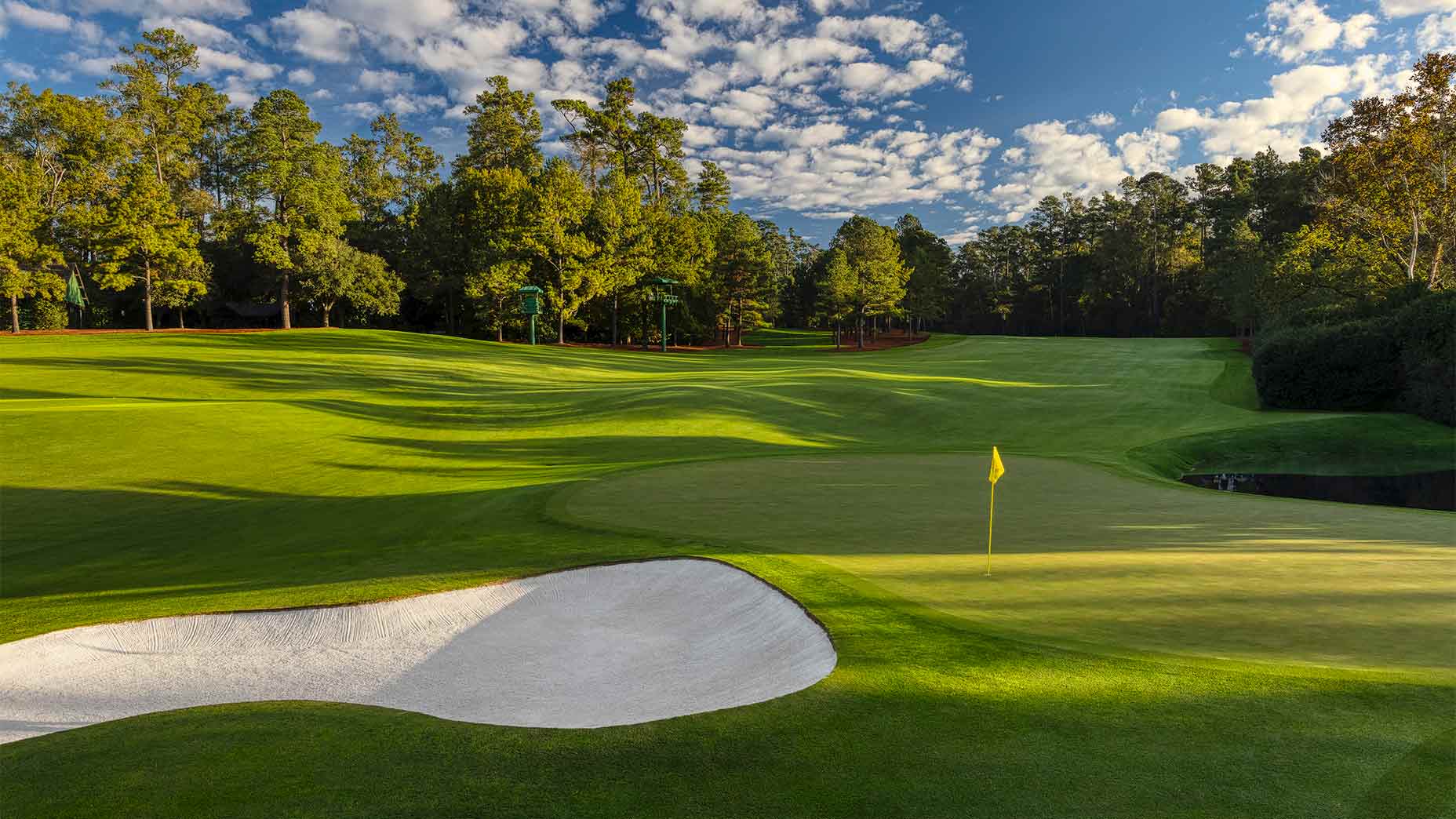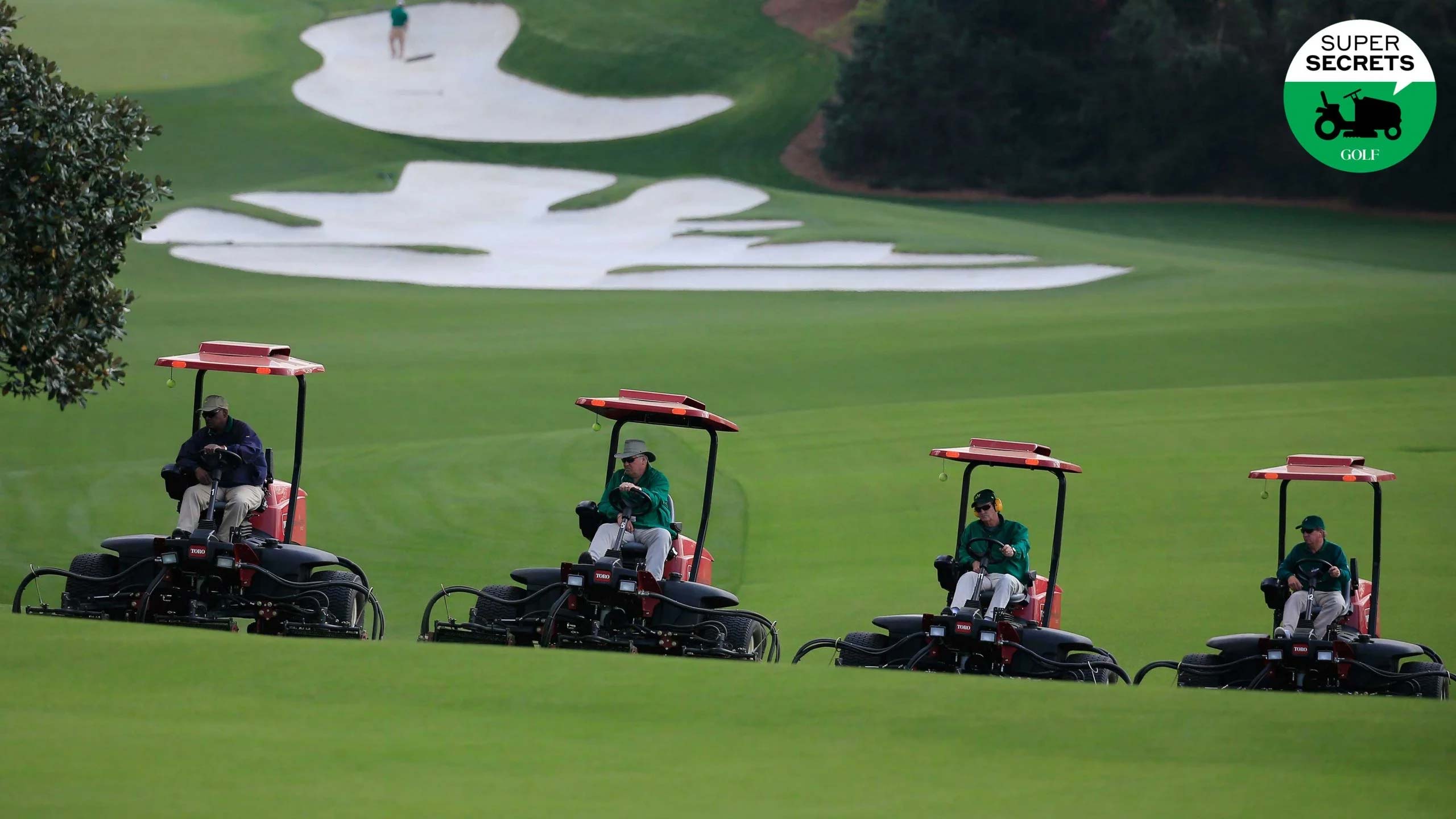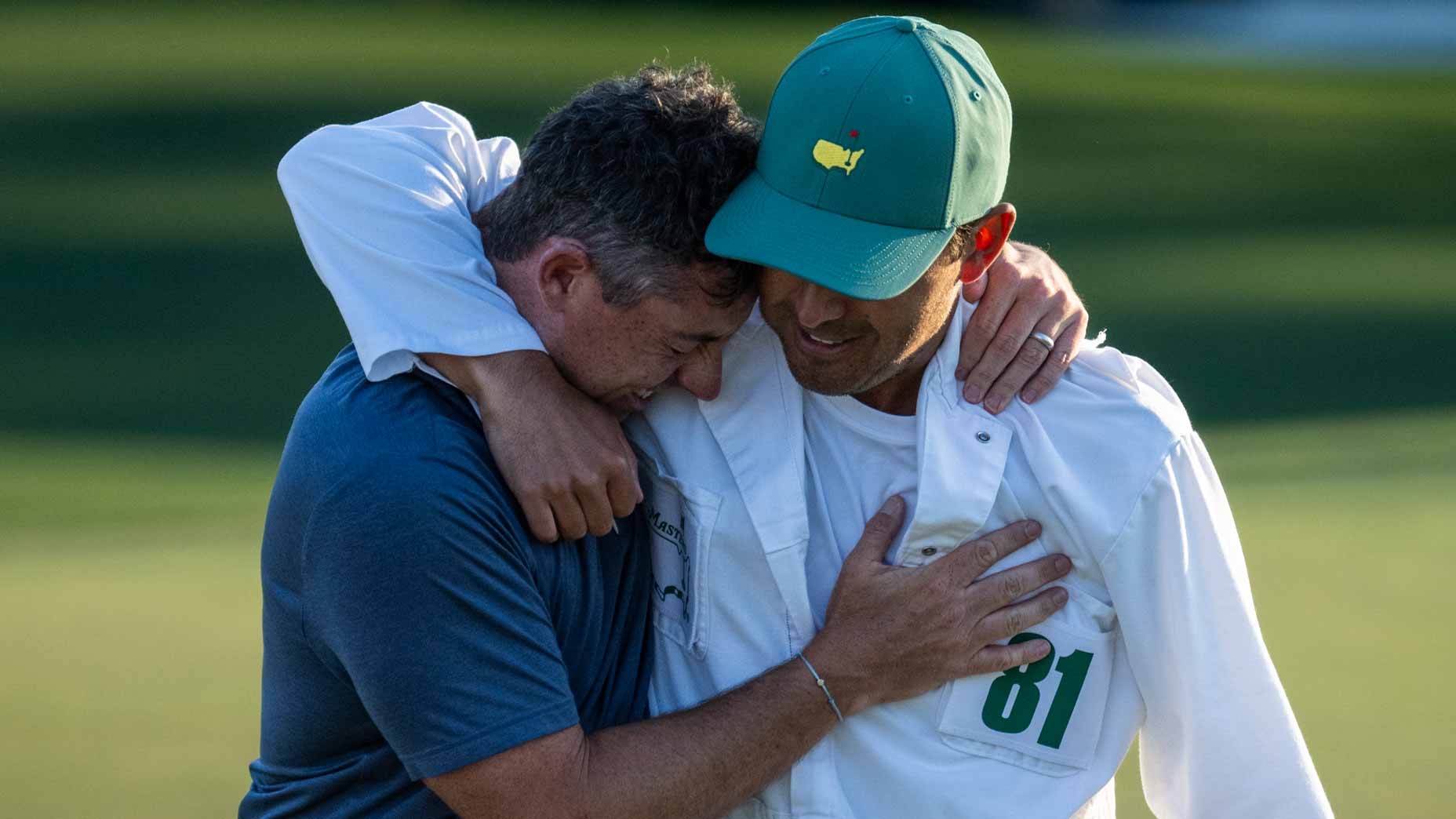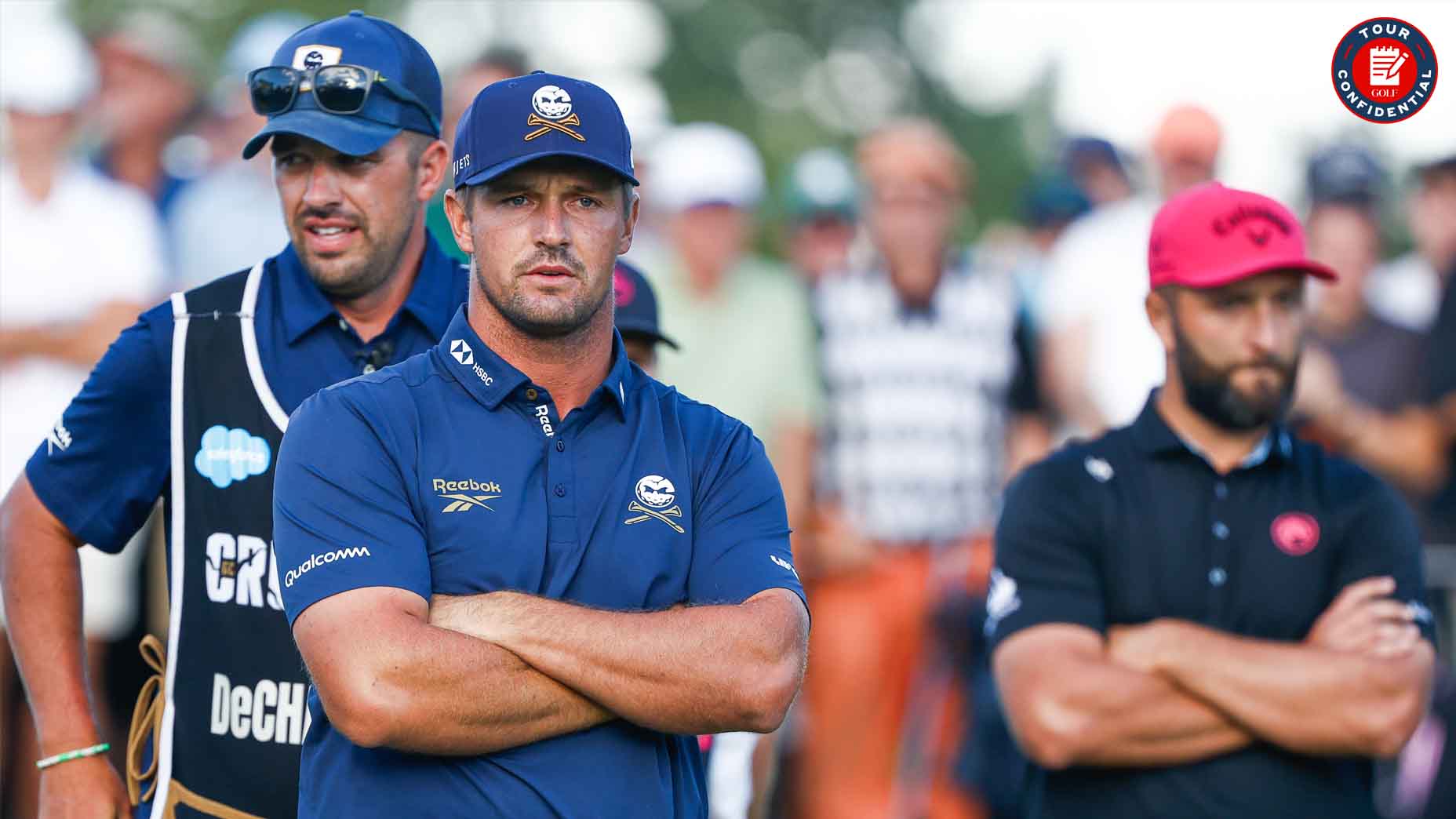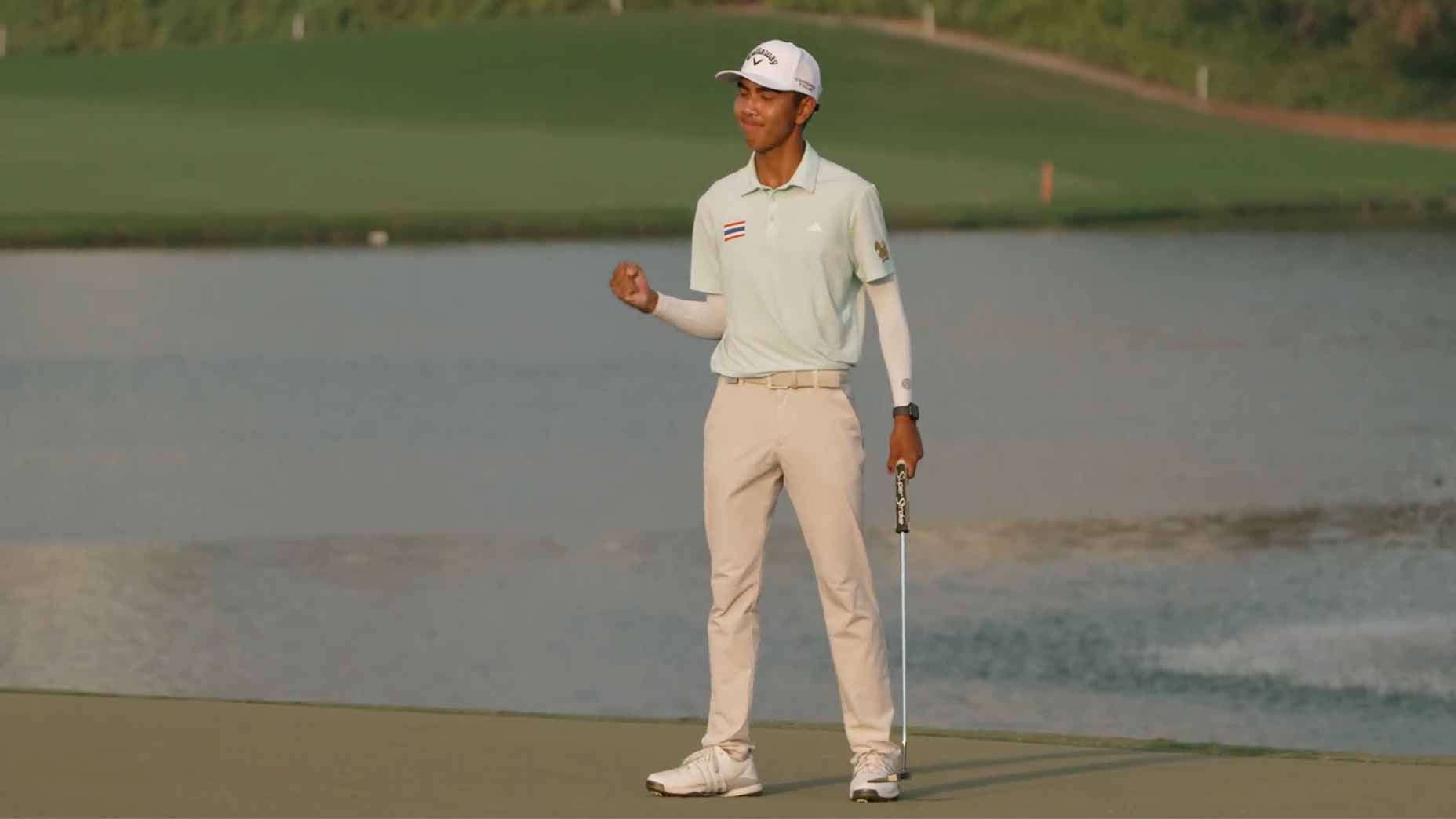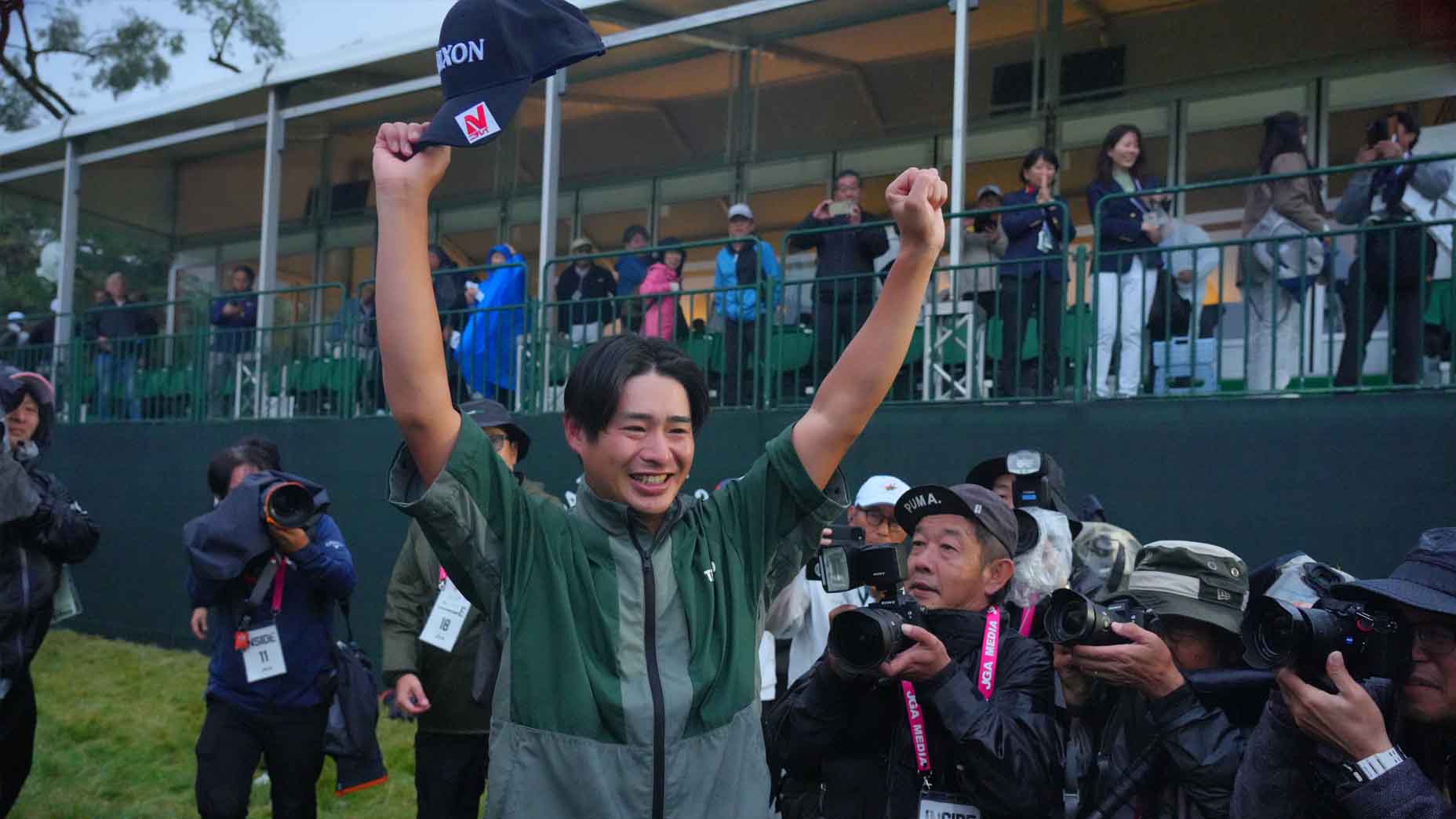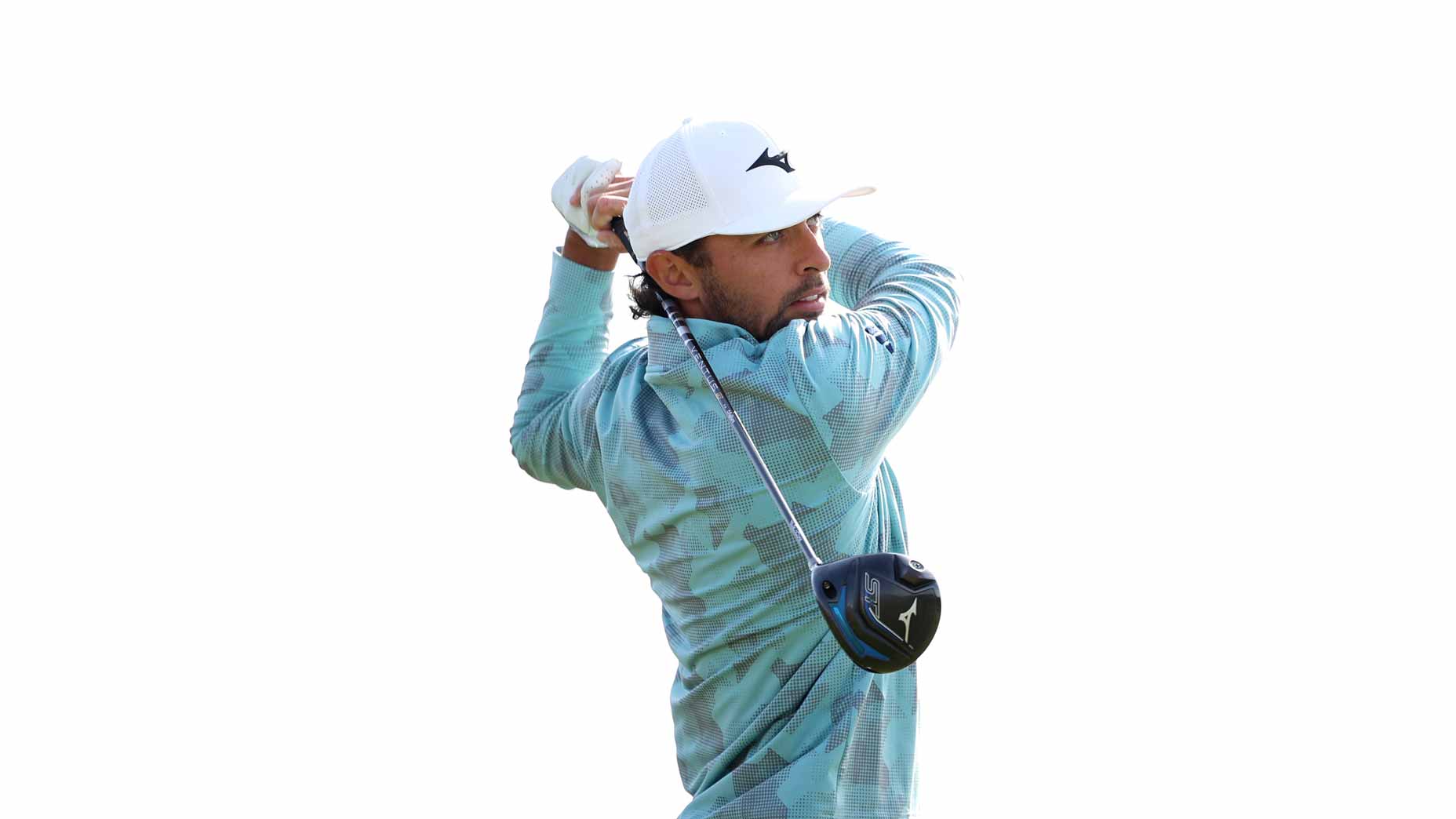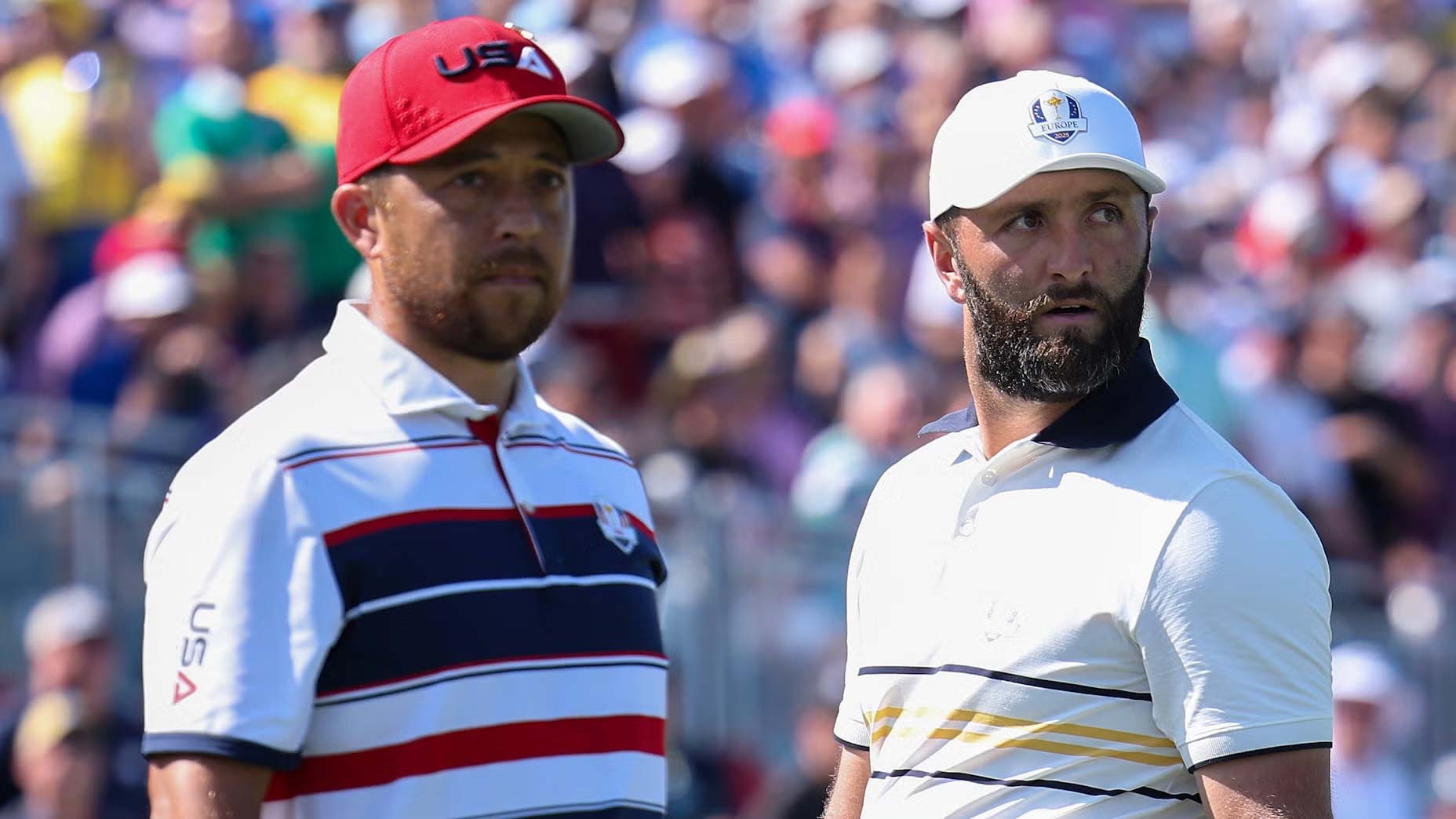AUGUSTA, Ga. — Abraham Ancer was rolling putts on Augusta National’s practice green late Friday morning when Harris English sidled up alongside him and dropped a couple balls.
“Hey, man,” English said. “I’m sorry about that whole bunker deal.”
He was referring to Ancer’s brush with the sand during Thursday’s opening round, a retroactive two-stroke penalty that turned his opening 73 into an opening 75 and must have soured his dinner.
Ancer appreciated the acknowledgement. “Ah, that’s okay,” he said, shrugging as if to say, “What can you do?” He continued to putt. It was a new day.
On Wednesdays at major championships, the board is set. On Thursdays, the pieces begin to move. But Fridays are when the tournament’s identity really takes shape. Fridays are when contenders emerge and when favorites go home. Some storylines begin and others end. The reason I like the practice area on Friday is because everybody’s there, mixed in, regardless of what they shot on Thursday or where on the leaderboard they’ll enter the weekend.
The practice facilities at the Masters are relatively simple but impeccably manicured and thoughtfully conceived. There’s a putting green and a couple chipping greens adjacent to the range itself. Behind the range is an amphitheater of brick and turf where interested spectators can take in the action. By Friday, everybody — even the Masters rookies — knows exactly where to go.
As Ancer began another round of four-footers, defending champion Dustin Johnson sauntered onto the green. (Nobody saunters like Dustin Johnson.) He set up an alignment aid on the ground and commenced putting. Before each stroke he would use his left arm to position his right arm in a very specific position. The putts rolled in.
Did you know? 18 fun facts you (probably) didn’t know about every hole at Augusta NationalBy: GOLF Editors
Christian Bezuidenhout, enemy of broadcasters everywhere with his tongue-twisting name, set up a small putting gate on the other side of the same hole. Johnson’s TaylorMade fell into the hole. Bezuidenhout poured in a Titleist. Johnson a TaylorMade. And so on. Y’know that awkward dynamic of sharing a hole with someone on a crowded practice green? Yeah, the pros deal with that, too. Even at Augusta.
Part of the joy of attending a golf tournament in person is seeing these players interact. Every week, the TV broadcast shows you a rundown of talented individuals hitting golf shots. But the nature of the sport means players in different groups almost never interact. In reality, all these golfers occupy the same space! They, like, talk to each other. They walk past each other. They joke with each other. They’re real people in real places (and surreal places, especially this week) and the social dynamics of the traveling circus make those interactions interesting.
Across the practice green from the world No. 1, Pete Cowen stood with Rory McIlroy’s caddie Harry Diamond, absentmindedly swinging a wedge. Air-chipping. Eventually McIlroy showed up, too. The three chatted, laughed, began a practice routine. On the putting green, it’s hard to tell who shot 66 the day before and who shot 76. It’s a place of possibility. What will you shoot today?
In the background, the names and numbers on the seven-slot leaderboard on the end of the range shifted. The red number next to ROSE went from 7 to 6 to 5 to 4. All these players were gaining on the leader before they’d even teed off.
There was Brooks Koepka, walking down the range. If you say hi to Koepka, he’ll respond. Just don’t expect him to say it first. There was Matthew Wolff, working a brand-new driver into play. There was Jon Rahm, beginning to limber up. There was Viktor Hovland, swinging a bag of balls, default grin on his face. There was Hideki Matsuyama, trying to transform a hook into a draw, driver by driver by driver.
In person, you’re reminded these players share more than just space. Rose’s coach, Sean Foley, was on the range working with Cameron Champ. Rose’s agent Mark Steinberg was tracking Justin Thomas, Collin Morikawa, Gary Woodland. Cowen consulted with McIlroy, then moved down the range to take a look at Koepka. There’s a rhythm to it.
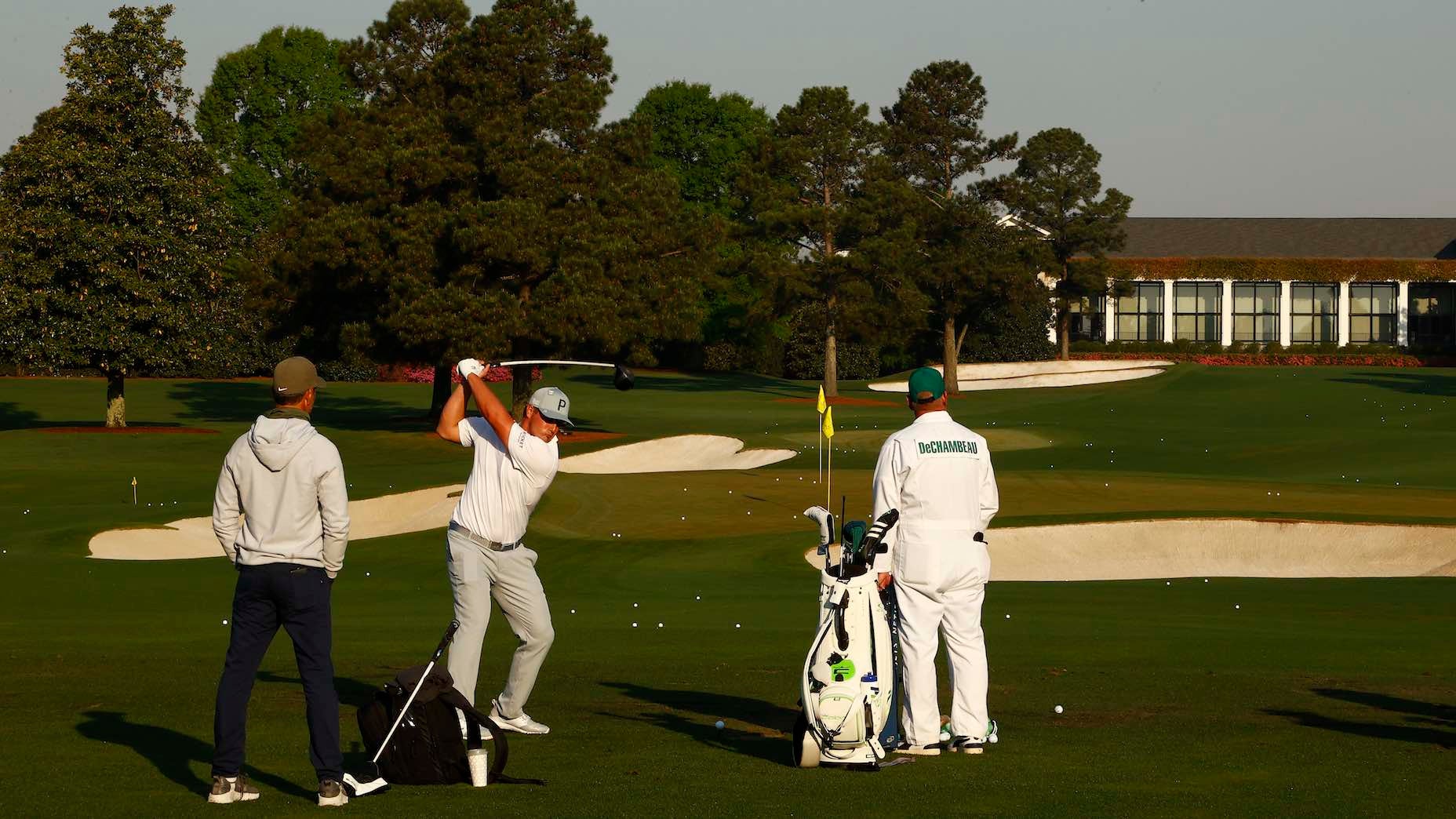
There was Bubba Watson, stepping into an open spot. He began his range session by snap-hooking a 60-yard wedge shot. Then he sliced a 60-yard wedge shot. Then another slice. Another wild hook. He was calibrating.
At typical Tour events there’s a levity to practice area conversations. Golfers arrive on different schedules; they sneak in practice where they can. They work casually on swing moves. They spend plenty of time on their phones. They talk college football.
But perhaps my favorite part of seeing pros at Augusta is seeing just how present they are. Some of these guys spend half their years playing professional golf tournaments, but they all circle this week on the calendar. They’re notably present. There’s an intentionality to their actions and to their routines. (The no-phone rule helps, too.) They have nowhere else to be. Whatever else may be right or wrong about the Masters, the tournament cares about its players and the players care about the tournament. That’s a hell of a strong foundation.
If I were a high school coach taking in the action, I’d have emerged with two takeaways for my kids.
- Practice more
- Practice slower
In other words, spend more time on the range — but hit fewer balls. Slow down. Be more intentional about the swings you do make. Not all reps are, on their own, good things.
It’s difficult not to wonder just how much each player’s technology has changed over the course of the last decade. Hovland had his Trackman. Watson had his FlightScope. Dustin Johnson and Claude Harmon pored over numbers on an iPad. Just a few years ago, every part of that would have looked and felt foreign.
Their technology isn’t the only thing that’s changed. The Masters tracks and measures every single shot hit on the range this week. On Friday morning the broadcast flashed a stat — “TOTAL RANGE SHOTS” — showing Bryson DeChambeau (781) well ahead of Justin Rose (327). The numbers told us something interesting about the golfers but something even more interesting about the tournament collecting those numbers.
Off the left side of the range, safe from all but the wickedest amateur snap-hooks, sits a structure housing the TV broadcasts. You can see your favorite Golf Channel and ESPN personalities from the practice area. It’s another reminder that the practice area is where those players get ready for their appearance on golf’s highest-profile TV show. The driving range is a green room in more ways than one.
Secrets of the Augusta National grounds crew: What it takes to get the course Masters-readyBy: Josh Sens
But even as the technology and scrutiny has amped up over the years, the simple human dynamics of the practice area haven’t. These players walk onto the range the way you might before a charity scramble at your local muni; they greet their friends, stop to chat, begin to limber up. One difference from your local muni: These golfers can pick up a bag of their exact brand of golf ball. No red stripes.
Late in the day, I strolled past the range again. The golfers I’d seen before were all on the course. Champ was working his way up the leaderboard with a run of birdies. Hovland was putting together a rollercoaster scorecard: Five birdies and an eagle, three bogeys and a double. Johnson, McIlroy and Koepka were battling just to stay inside the cut line — a battle they’d each ultimately lose. The red numbers on the scoreboard showed ROSE had climbed back to 7, with others in hot pursuit.
A few golfers had replaced them, and one caught my eye: A smooth-swinging golfer wearing a white shirt, a white hat and a greying beard. The speed of his swing was distinctly different than someone like Champ, who’d finished off his range session with a series of low missiles hit so hard they seemed to defy gravity. But this was 55-year-old Jose Maria Olazabal, grinding away in near anonymity.
Sunday will mark the 22nd anniversary of Olazabal’s second Masters win. He’s played the event every year since, but with less success: He hasn’t made the cut since 2014. Since 2015, he’s played 30 events across the European and PGA Tours. He’s made zero cuts. But on Friday at the Masters, he shot one-under 71 to post a two-day score of 146 and secure a weekend tee time. Friday marked the birthday of his dear friend Seve Ballesteros, who he honored with an outfit of white and navy. Making the cut, he said, felt like winning the tournament.
I didn’t know any of those details at the time. I saw a man with his caddie and a bag of golf balls, working on his game. Maybe he was searching for a little tweak that would make Saturday’s round just that much better. Maybe he was just soaking up the moment, enjoying the satisfaction of playing the weekend at Augusta.
When it comes to driving ranges, after all, it’s tough to beat this one.

